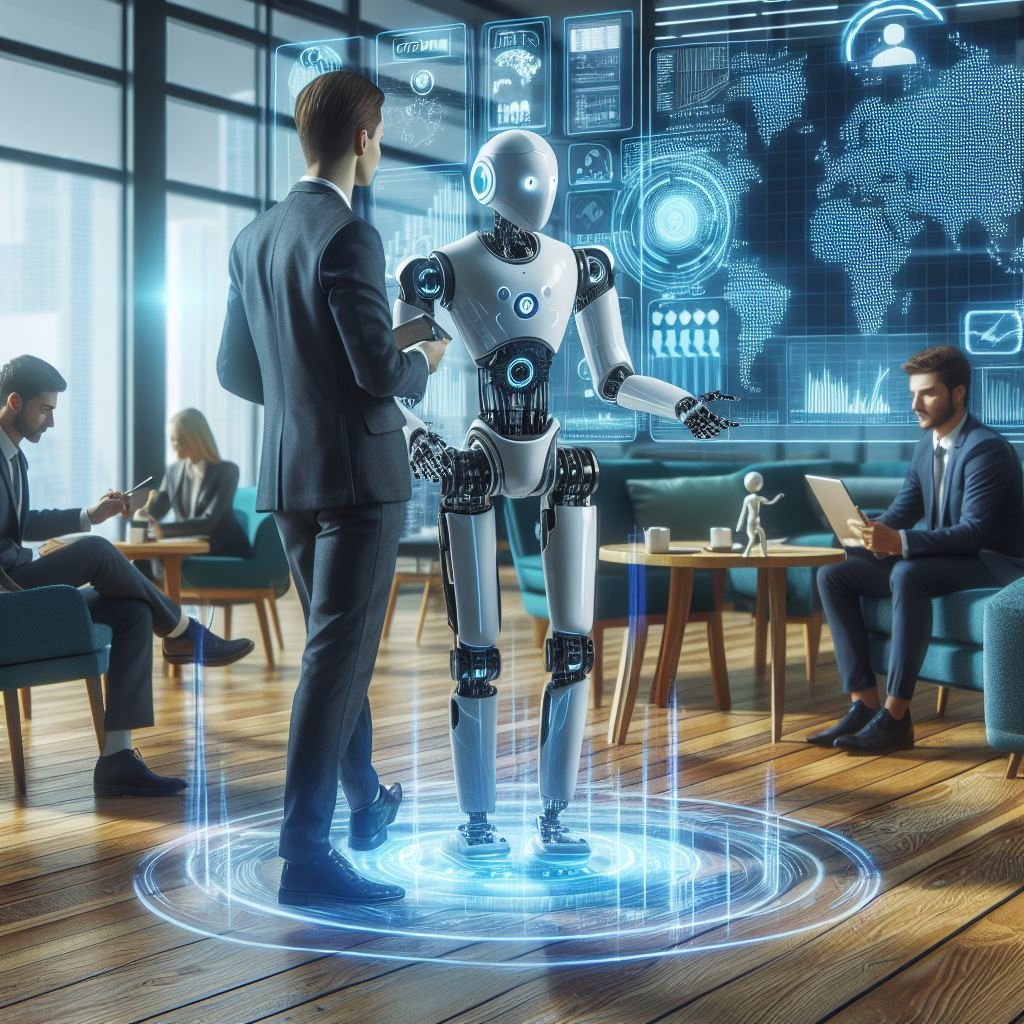The emergence of personal and servicing robotics marks a transformative era in human-computer interaction. Once relegated to the realms of science fiction, robots are now becoming integral parts of our daily lives, reshaping industries and enhancing convenience in unprecedented ways. From domestic helpers to companions and caregivers, the personal and servicing robotic market is experiencing rapid growth and innovation, promising a future where robots are ubiquitous.
The Growth Trajectory
The personal and servicing robotic market has witnessed exponential growth in recent years, driven by advancements in artificial intelligence, machine learning, and robotics engineering. According to industry reports, the market is expected to surpass USD 50 billion by 2025, with a compound annual growth rate (CAGR) exceeding 20%. This meteoric rise can be attributed to several key factors.
Technological Advancements
One of the primary drivers of growth in the personal and servicing robotic market is the continuous advancement of technology. Today's robots are equipped with sophisticated sensors, actuators, and AI algorithms that enable them to perform complex tasks with precision and efficiency. From autonomous vacuum cleaners that map out floor plans to humanoid robots capable of natural language processing, the capabilities of personal and servicing robots are expanding rapidly, fueling demand across various industries and applications.
Changing Demographics and Lifestyle Trends
Changing demographics, coupled with evolving lifestyle trends, are also driving the adoption of personal and servicing robots. With an aging population and shrinking workforce in many developed countries, there is a growing demand for robotic solutions that can assist with tasks such as eldercare, healthcare, and household chores. Additionally, urbanization and the rise of dual-income households have created a need for time-saving technologies, making robotic appliances and assistants increasingly appealing to consumers.
Industry Applications
The personal and servicing robotic market encompasses a wide range of industries and applications, each with its unique set of challenges and opportunities.
1. Domestic Robotics
Domestic robotics, including robotic vacuum cleaners, lawn mowers, and window cleaners, have become staples in modern households. These robots automate mundane tasks, freeing up time for homeowners to focus on more meaningful activities. With advancements in AI and computer vision, these robots can navigate complex environments and adapt to changing conditions, making them increasingly efficient and reliable.
2. Healthcare Robotics
Healthcare robotics is another rapidly growing segment within the personal and servicing robotic market. Robots are being deployed in hospitals and care facilities to assist with tasks such as patient monitoring, medication delivery, and rehabilitation. Robotic exoskeletons, for example, help individuals with mobility impairments regain independence and improve their quality of life. As the global population ages, the demand for healthcare robotics is expected to soar, creating new opportunities for innovation and growth.
3. Companion Robotics
Companion robotics, designed to provide companionship and emotional support, are gaining popularity, particularly among the elderly and socially isolated individuals. These robots, equipped with AI-powered conversational abilities and expressive gestures, serve as companions, entertainers, and cognitive aids. Some companion robots are also used in therapeutic settings to assist individuals with autism, dementia, or mental health disorders, offering personalized interactions and interventions.
4. Personal Assistance Robotics
Personal assistance robotics is another burgeoning field with applications ranging from personal grooming and fitness to education and entertainment. Smart mirrors equipped with augmented reality (AR) technology, for example, provide personalized beauty tips and workout routines, while educational robots engage children in interactive learning activities. As AI continues to advance, personal assistance robots will become increasingly adept at understanding and responding to human needs, further blurring the lines between man and machine.
Challenges and Considerations
While the prospects for the personal and servicing robotic market are undoubtedly promising, several challenges and considerations must be addressed to ensure its sustainable growth and widespread adoption.
1. Ethical and Social Implications
The rise of personal and servicing robots raises complex ethical and social questions regarding privacy, autonomy, and job displacement. As robots become more integrated into society, it is essential to establish clear guidelines and regulations to protect individuals' rights and ensure equitable access to robotic technologies.
2. Technical Limitations
Despite significant advancements, personal and servicing robots still face technical limitations, such as battery life, mobility, and dexterity. Overcoming these challenges will require continued investment in research and development, as well as collaboration across disciplines to push the boundaries of what is possible.
3. Cost and Affordability
The cost of personal and servicing robots remains a barrier to widespread adoption, particularly for consumers in emerging markets and individuals with limited financial resources. Manufacturers must work to reduce production costs and improve economies of scale to make robotic technologies more accessible to a broader range of consumers.
4. Human-Robot Interaction
Ensuring seamless and intuitive human-robot interaction is crucial for the successful integration of personal and servicing robots into everyday life. Designing robots that are user-friendly, empathetic, and culturally sensitive requires a deep understanding of human psychology and behavior, as well as ongoing user feedback and iteration.
Conclusion
The personal and servicing robotic market is poised for exponential growth, driven by technological advancements, changing demographics, and evolving lifestyle trends. From domestic helpers and healthcare assistants to companions and personal assistants, robots are becoming indispensable parts of our daily lives, offering convenience, efficiency, and companionship. However, realizing the full potential of personal and servicing robots will require addressing a range of technical, ethical, and social challenges, as well as fostering collaboration and innovation across industries and disciplines. As we stand on the brink of a robotic revolution, the future of everyday life looks more exciting and promising than ever before.
#PersonalRobots #ServicingRobots #RoboticsMarket #FutureTech #AI #MachineLearning #Innovation #DomesticRobots #HealthcareTech #CompanionRobots #PersonalAssistants #EthicalTech #SocialImplications #HumanRobotInteraction #TechTrends #FutureOfWork #AICompanions #RobotRevolution #InclusiveTech #SmartTech #EmergingTechnologies #TechInnovations #Automation #DigitalTransformation #TechEthics #RoboticAssistants #LifeEnhancement #ElderlyCare #TimeSavingTech #ArtificialIntelligence #TechSolutions #AIProgress #CuttingEdgeTech #TechForGood #RobotCompanions #TechForEveryone #SustainableTech #AccessibleInnovation #Industry4.0 #DigitalFuture #TechInsights #TechNews #AIAdvancements #RoboticsIndustry #SmartLiving #EmpoweringTech #InnovationForAll #amoltechnicalguru

